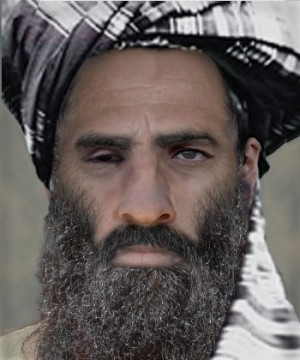
A Taliban spokesman sayhttps://yalibnan.com/wp-admin/media-upload.php?post_id=27757&type=image&TB_iframe=trues the group’s phones and website were hacked, and text messages sent out saying their reclusive Afghan leader Mullah Mohammed Omar is dead — a claim the group has denied.
Omar is alive and the reports “are just propaganda against our leader and our mission,” spokesman Zabihullah Nujahid told CNN.
NATO said it has no operational knowledge of Omar’s condition or whereabouts.
This is not the first time speculation of Omar’s death has surfaced.
In May, the Taliban forcefully denied reports that their leader is dead, dismissing them as “claims and rumors” from the “Kabul stooge regime’s intelligence directorate.”
At the time, a news report by Afghanistan’s TOLOnews suggested Omar was dead.
A spokesman for Afghanistan’s intelligence agency, the National Directorate of Security, said in May that Omar had disappeared. Lutfullah Mashal said at the time that he hoped Omar was dead, but could not confirm it.
Omar was a rural Islamic cleric when he became a leader of a group of students — or “Taliban” — who took over Afghanistan in the early 1990s and established a hard-line Islamic fundamentalist regime that gave shelter to Osama bin Laden and his al Qaeda terrorist network.
U.S. Navy SEALs killed bin Laden in May in Pakistan, nearly 10 years after the September 11, 2001, attacks.
The United States led an invasion of Afghanistan soon after the attacks, toppling the Taliban and sending bin Laden into hiding.
The secluded Omar refused to be photographed or filmed, and rarely traveled. He infrequently gave interviews and was thought to have met only two non-Muslims in recent years.
Nonetheless what Omar said passed as law when the Taliban ruled Afghanistan, and to challenge him was unknown.
Those who had met Omar said he cast an imposing figure — bearded with a black turban and one eye stitched shut; the result of a wound suffered during a gunfight with Soviet troops during their occupation of Afghanistan.
In the wake of the Soviet withdrawal, Omar created the Taliban to overcome what he saw as Afghanistan’s descent into a lawlessness landscape dominated by warlords.
His recruits came from the Islamic schools within Afghanistan and in the Afghan refugee camps across the border in Pakistan. Driven largely by faith, they swept across the country.
With most of the country under Taliban control, he set himself the goal of transforming Afghanistan into the purest Islamic state in the world, declaring himself Amir-ul-Momineen, or head of the Muslims.
While many ordinary Afghans disagreed with his hard-line interpretation of Islam, others were willing to endure the Taliban’s excesses in exchange for the relative peace they brought to the territory they controlled.
In building the perfect Islamic state, though, he had little regard for the concerns of the outside world.
Public executions and amputations were common, and the Taliban’s treatment of women attracted much international condemnation.
Omar vanished after a U.S.-led coalition booted the Taliban and their leaders from power in Afghanistan in December 2001 for refusing to hand over bin Laden after the 9/11 terror attacks.
His appearance has remained a mystery to many, and that presented a challenge to those on his trail, according to Afghan President Hamid Karzai.
The U.S. government offered a reward of up to $10 million for information leading to Omar’s capture.
Leave a Reply
You must be logged in to post a comment.